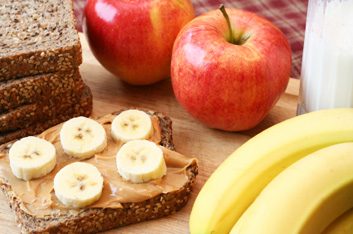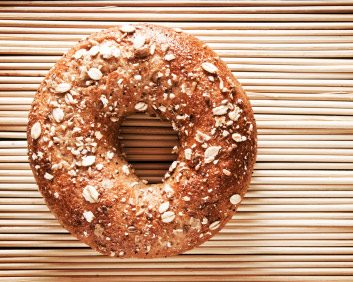
The first step in ending overeating
Understanding why we consume too much is the first step to stopping the behaviour. We talked to Krista Leck Merner, a registered dietitian at Bent Fork Nutrition in Halifax, about how to end overeating.

1. Eat every three to four hours
Spreading your caloric intake evenly throughout the day keeps your blood sugar stable. “You’ll have more willpower, make better food choices and eat more appropriate portions,” says Leck Merner.

2. Balance your plate
Aim for three or four food groups for meals, and two for snacks. “When we’re digesting a little of everything, our blood sugar stays more stable,” says Leck Merner. For lunch, try chicken, rice and broccoli; or a peanut butter sandwich, banana and milk. For snacks, try yogurt and fruit, or a dozen almonds and an apple.

3. Don’t ban treats
When it comes to dietary changes, says Leck Merner, people often adopt an “all or none” mentality. It’s okay to indulge cravings-just don’t overdo it. “I encourage people to have that 100-calorie treat. By incorporating it on a daily basis, we’re less likely to overeat.”

4. Size up your meals
You might be eating more than you think. For example, according to Dietitians of Canada, a jumbo bagel can be the equivalent of six grain-product servings. Switch to smaller ones, and you’ll also reduce calories from condiments. “The more you can stick with eating what you want, the more successful you’ll be,” says Leck Merner-but shrink the portions.

5. Eat with awareness
“Choose what you’re going to eat, where you’re going to eat it and why,” says Leck Merner, adding that people often confuse boredom with hunger. Curb mindless eating; stop grazing from the office candy dish; and when watching TV, enjoy a small bowl of snacks rather than gobbling the whole bag.

6. Write it down
Keeping a food diary highlights “trouble zones,” says Leck Merner. “It’s painful but very effective, and it keeps you accountable. When you’ve got a handful of jelly beans, you’re going to think twice before you eat it if you have to write it down.”

7. Identify your triggers
We all have foods we can’t resist. Figure out which make you cave, and don’t stock them at home. “I find that women, especially, use the excuse that we buy it for our kids or husband, but really we eat it as well,” says Leck Merner.

8. Make nutritious eating easy
When you bring home fruit or veggies, wash and chop them right away. “Having the healthy options at the front of your fridge, ready to go, makes it easier to stay on track,” says Leck Merner. Also, plan around “danger zones,” such as the window of time between when you leave work and when you have dinner-try packing fruit or nuts.
Related:
• 10 quick tricks for eating better
• How mindful eating can help you lose weight
• 7 ways to eat well when you’re busy

8. Make nutritious eating easy
When you bring home fruit or veggies, wash and chop them right away. “Having the healthy options at the front of your fridge, ready to go, makes it easier to stay on track,” says Leck Merner. Also, plan around “danger zones,” such as the window of time between when you leave work and when you have dinner-try packing fruit or nuts.
Related:
• 10 quick tricks for eating better
• How mindful eating can help you lose weight
• 7 ways to eat well when you’re busy
